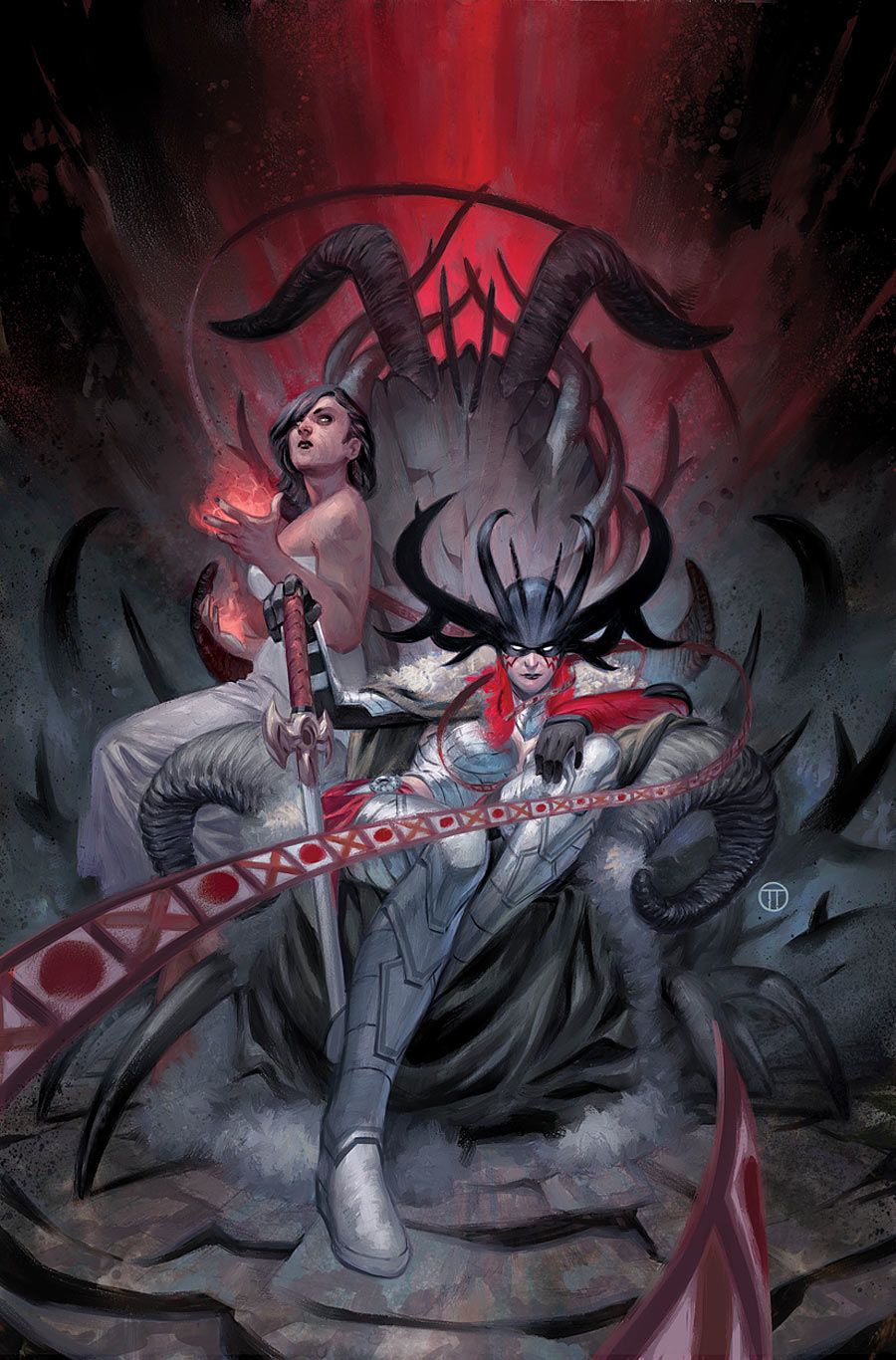In "Angela: Queen of Hel" #1, writer Marguerite Bennett establishes Angela's status quo early on before focusing on some of her past. Artists Kim Jacinto and Stephanie Hans split the art duties, with Jacinto beautifully and cleanly illustrating the issue's main sequence within the halls of a rather lavish looking Hel. Hans just as gorgeously paints a sidebar sequence with a more surreal touch, giving the entirety of the issue an attractively diverse appearance, while also giving Bennett's somewhat disjointed but nicely characterized story a bit more punch.
Jacinto opens the issue with a pair of nicely constructed pages, the first showing the more familiar "classic" Angela alongside her companion Sera on an otherworldly battlefield, and the second introducing the new incarnation of Angela, who appears to relish her new role as a queen. Each page is not only stunningly laid out but nicely colored by Israel Silva, whose palette enhances the detail in Jacinto's lines, making both pieces poster-worthy additions to any comic fan's wall. Jacinto's remaining pages are no less worthy, functioning as a scenic tour of Hel, which Jacinto makes a lot prettier than such an excursion might initially sound.
Hans' painted pages take on a more dreamlike texture, with a seemingly deliberate fuzziness to both the subjects and backgrounds alike. Bennett hints that the scenes of a very close Angela and Sera could very well be a memory of a happier time between the two, or just as easily could be a conjured up vision by an ambiguously defined opponent. Either way, the sequence nicely conveys Bennett's intent of showcasing the friendship between the two, one that is perhaps surprisingly even closer than things might seem at first.
Whether memory or vision, Bennett's depiction of Angela and Sera's bond is convincingly established and well characterized. Angela is serious and driven, as always, but Sera's more flippant, happy-go-lucky yet vulnerable persona is captured well by Bennett, making her the more interesting character of the two. Sera's dialogue, while sometimes a bit awkward and stilted, is more often punchy and down-to-earth than anything else. Her penchant for speaking in song is both endearing and threatening, depending on the situation, and -- once Bennett develops Sera's personality -- she shows a different side of her that makes for a somewhat surprising cliffhanger come issue's end.
Though the overall story that houses some wonderful character development and showcases some beautiful art, it comes across as a somewhat haphazard and fragmented introduction. Bennett's script jumps from past to present to elsewhere in the past again, giving way to what may or may not be yet another time in the past before coming back again. A lot of early exposition and a shift in story point-of-view add a little confusion that might require some rereading, and talk of "hierophants" and "anchorites" will only add another source of confusion to new readers. The cover says issue #1, but it reads more like issue #37 or thereabouts, and the time-jumping doesn't make the issue very welcoming.
The issue's standard cover by Julian Totino Tedesco is a minimally colored but fitting and eye-catching image of Angela on the queen's throne, laid out similar to one of Jacinto's images inside but with a decidedly darker vibe. "Angela: Queen of Hel" #1 isn't the most easily read series introduction, but it's full of highlights like good characterization and attractive art throughout, which makes it worth picking up.

